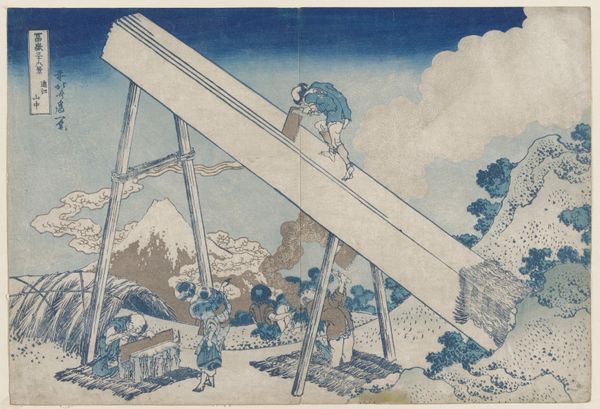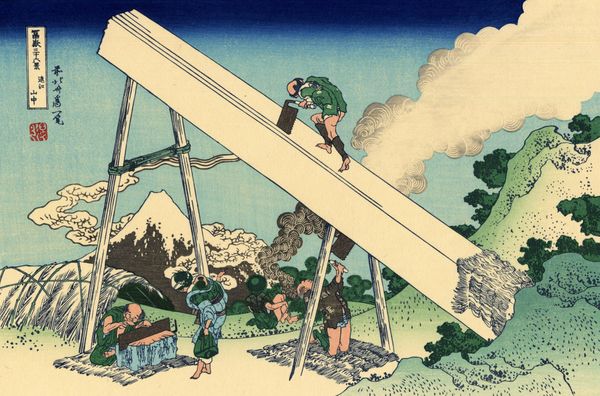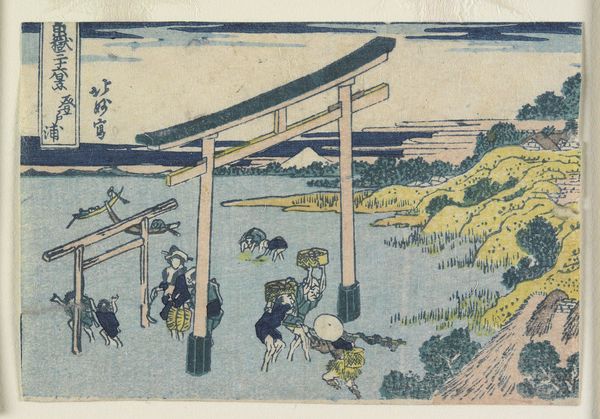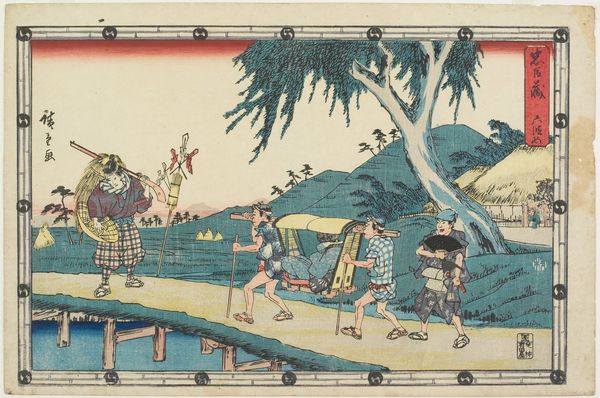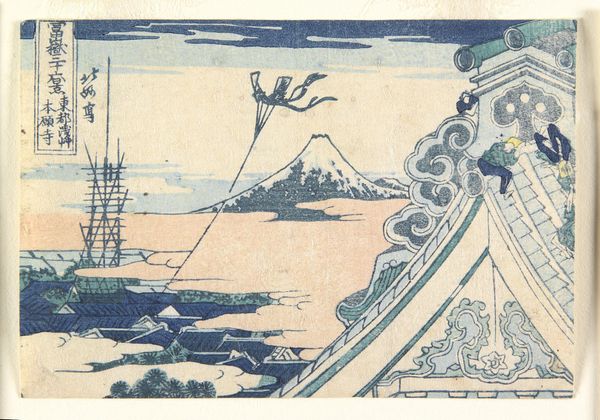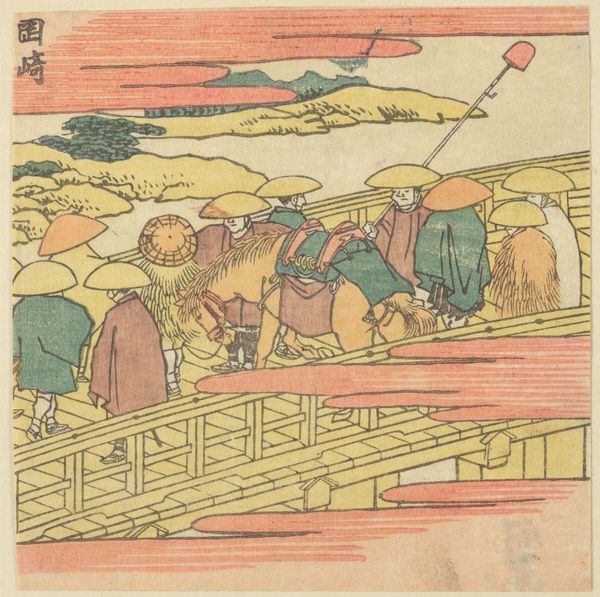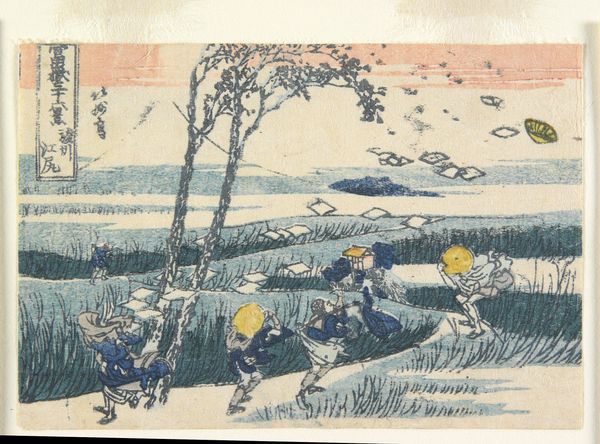
print, ink, woodblock-print, wood
# print
#
asian-art
#
landscape
#
ukiyo-e
#
japan
#
ink
#
woodblock-print
#
wood
Dimensions: 3 1/8 × 4 5/8 in. (7.9 × 11.8 cm) (image, sheet, yatsugiriban)
Copyright: Public Domain
Curator: Looking at "In the Mountains of Tōtōmi Province," a woodblock print crafted by Hokumyō around 1834 to 1837, you’re immediately drawn into a scene teeming with human activity. Editor: Yes, my first impression is that the piece exudes a palpable sense of labor and industry. The cool blues and greys create a serene backdrop, almost contrasting with the vigorous efforts of the figures depicted. It makes me wonder about the labor involved in producing these colossal wood planks. Curator: Exactly! Hokumyō captures a moment deeply embedded in the socio-economic fabric of the time. The ukiyo-e style itself speaks to a broader cultural interest in everyday life. How are ordinary citizens impacted? How are mountains treated in this process? Editor: You’ve highlighted something fascinating: the direct physical engagement with resources, visible through the tools and collective activity. And, these details hint at the material and logistical challenges these workers face. I can imagine that shaping raw materials into functional objects demands considerable skill. Curator: Absolutely. Consider, too, the institutional support, the distribution networks that would have made such scenes—and therefore these prints—visible and consumable. We have Mount Fuji ever-present in the background too. Does it serve as a brand of quality assurance, since so many landscapes at this time prominently featured it? Editor: Interesting question. If the mountain is a stamp, this speaks to a fascinating tension between artistic expression and commercial imperative, really underscoring art's embeddedness in social production. The way each section has its specific repetitive gesture seems like this, as well. Curator: Thinking about public access and consumption opens another important discussion on cultural messaging embedded in the work itself. What exactly is the audience being asked to accept or reject by looking at this image? Editor: Indeed. We are given the material conditions for this process without a lot of spectacle, without a kind of heroic interpretation that could've appeared here. Curator: Thinking more about this Hokumyō work now, its appeal lies not just in its aesthetic value but in its narrative and cultural reflection. It encourages one to consider Japan in the period, at a nexus point in their development. Editor: Precisely. Hokumyō doesn’t shy away from showing how physical objects of daily life are made, allowing viewers today a window into a particular space and time where material creation played an everyday role.
Comments
No comments
Be the first to comment and join the conversation on the ultimate creative platform.
